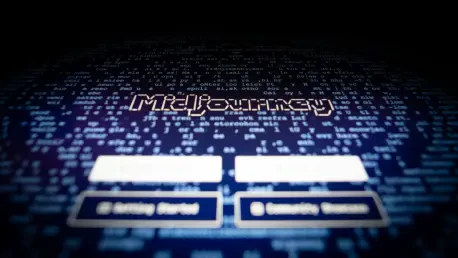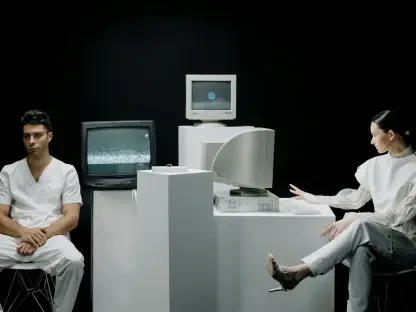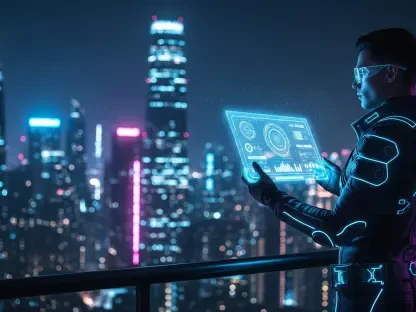Simon Glairy, an acclaimed expert in insurance and Insurtech, brings a wealth of knowledge in risk management and AI-driven risk assessment. His insights are especially valuable as we delve into the dynamic field of AI, touching on Midjourney’s latest video generation model, V1. Our conversation with Simon covers the intricacies of V1, its functionalities, competitive positioning, and the implications of recent legal challenges.
Can you provide a brief overview of Midjourney and its new AI video generation model, V1?
Midjourney has made a name for itself with its AI image generation capabilities. With the launch of V1, they’re venturing into video, transforming images into short videos. It’s an exciting development, offering users a new dimension of creativity by generating multiple video outputs from a single image input.
How does V1 differ from Midjourney’s previous image models?
V1 builds upon Midjourney’s expertise in image generation by translating visual concepts into motion. Unlike static images, V1 captures movement, providing four brief videos for every image input. This sets it apart by focusing on dynamic storytelling rather than static visualization.
What specific features does V1 offer to users for video creation?
V1 provides users with options like automatic or manual animation, allowing them to dictate the style and direction of their videos. Users can adjust motion levels, enhancing the depth and variety of video outputs. These features ensure a customizable creative process.
Why is V1 only available through Discord, and are there plans for other platforms?
Midjourney’s choice to launch V1 via Discord ensures accessibility to a community already familiar with their image models. Discord fosters interaction and feedback, critical in early-stage development. There might be potential for expansion to other platforms, but Discord represents their immediate focus.
How does V1 compare to the AI video generation models from competitors like OpenAI, Adobe, and Google?
V1 distinguishes itself through its artistic, less commercial approach, unlike other models from OpenAI or Adobe, which prioritize specific commercial functionality. The creativity-centric design gives Midjourney’s model a unique flair, but competition remains fierce.
What long-term goals does Midjourney have for its AI video models beyond commercial applications?
Midjourney envisions creating AI models that support real-time open-world simulations. Their ambition transcends traditional applications, aiming to redefine interactive experiences that simulate reality continuously and dynamically.
Can you elaborate on Midjourney’s goal of developing real-time open-world simulations?
These simulations entail continuous environmental and user interaction, crafting worlds that evolve with user input and AI responses. It’s a vision geared toward immersive, ever-changing experiences, potentially revolutionizing gaming, education, and beyond.
What are the plans for developing AI models for 3D rendering and real-time applications?
Their strategy includes advancing AI models capable of producing real-time 3D renderings, broadening capabilities from flat visuals to complex spatial creations. This progress aligns with industry trends pushing for interactive and immersive consumer experiences.
How has the lawsuit from Disney and Universal affected Midjourney’s business and development plans?
This legal challenge underscores the critical need for copyright diligence, impacting both operational strategies and reputational standing. Midjourney may need to reevaluate training data and assure compliance to mitigate risks and sustain innovation.
How does Midjourney plan to address concerns about copyright infringement from major studios?
Proactively, Midjourney likely seeks to enhance transparency about the data sources they use while fostering collaboration with copyright holders to redefine content creation ethically and legally.
What measures is Midjourney taking to ensure creativity is a focus in its AI models?
Midjourney’s track record shows a commitment to pushing creative boundaries, designing models that inspire artistic exploration rather than solely fulfilling commercial objectives. Their product updates and community engagement reflect this ethos.
How are Midjourney’s pricing plans structured for video generation compared to image generation?
There’s a notable difference, with video generation priced higher, reflecting increased computational demands. These tiered plans cater to various use levels, with more frequent users benefiting from unlimited generation options under certain subscriptions.
What feedback have you received from early users of the V1 model?
Initial reactions to V1 highlight its creative potential. Users appreciate its unique style, though comparisons with established models suggest room for refinement in terms of polish and realism.
How does V1 allow users to customize video outputs through its settings?
Through settings that let users dictate movement and animation style, V1 offers granular control over video creation. These choices enable a tailored approach to video storytelling, by aligning outputs closely with user intent.
What are the potential applications for V1 in creative fields?
V1’s outputs lend themselves well to creative industries, like filmmaking, advertising, and digital art. Its innovation in short-form video production unlocks new avenues for creative expression and storytelling.
How long can V1-generated videos be, and what are the options for extending their duration?
The default video length is five seconds, with extension options increasing the duration in four-second increments up to 21 seconds. This flexibility allows users to construct more elaborate narratives.
In what ways are V1-generated videos similar to or different from hyperrealistic videos?
V1 videos maintain an otherworldly aesthetic, contrasted with hyperrealism from competitors. This stylistic choice reflects Midjourney’s creative direction, focusing on evocative visuals rather than purely realistic representations.
How does Midjourney plan to assess and possibly adjust its pricing model for V1 in the future?
Continuous user feedback and market trends will inform pricing adjustments. Midjourney’s approach likely involves adaptive strategies to ensure competitiveness and accessibility across different user tiers.
What challenges has Midjourney faced in developing and launching V1?
Technical hurdles, coupled with legal concerns, have posed significant obstacles. Navigating these challenges requires balancing innovative strides with compliance and resource management.
Do you have any advice for our readers?
Embrace AI’s evolving capabilities, but remain mindful of ethical considerations. Engaging with these tools creatively and responsibly will lead to meaningful advancements and insights in this ever-expanding field.









